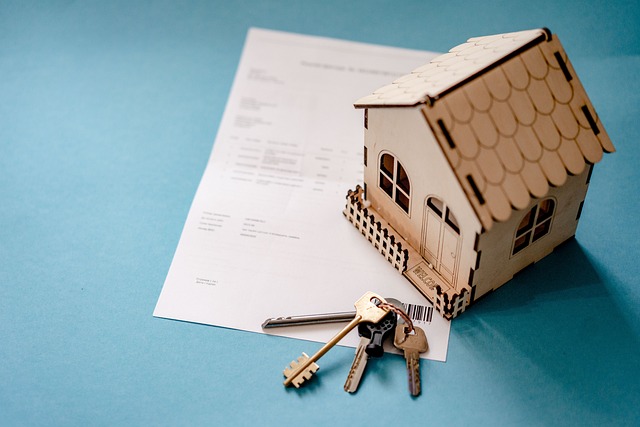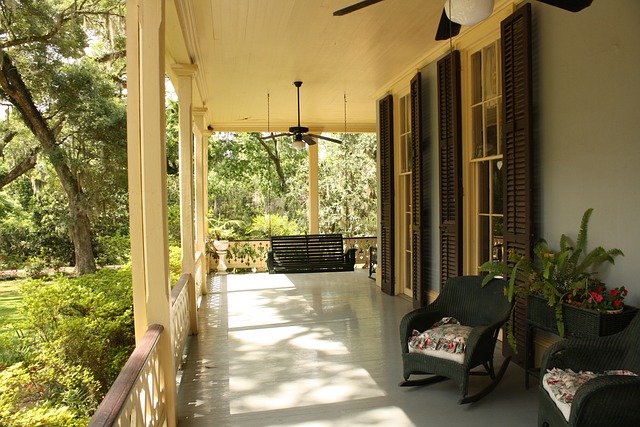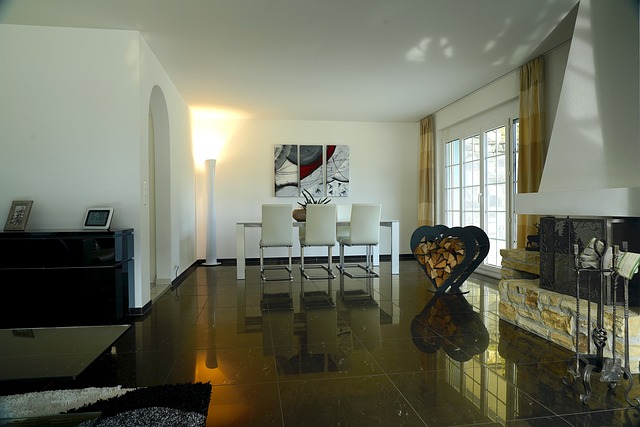When purchasing a second property in Singapore, investors must navigate a complex regulatory environment that includes policies like the Additional Buyer's Stamp Duty (ABSD) and Total Debt Servicing Ratio (TDSR), as well as consider economic trends, market conditions, and their own financial health to ensure a sustainable investment. Strategic mortgage selection is critical, with attention to loan-to-value ratios, interest rate types, and potential tax implications from capital gains tax and ABSD. A diversified property portfolio that includes various types of properties across Singapore can offer protection against market volatility. By staying informed about Singapore's economic landscape and policy changes, investors can make well-informed decisions to buy a second property with the aim of long-term capital appreciation.
Considering a second property purchase in Singapore’s dynamic real estate market? This article demystifies the process, guiding you through the unique considerations and strategic financial planning necessary for a savvy investment. From comprehending the nuanced legal framework to evaluating property value trends, this comprehensive guide addresses key factors such as compliance for non-owner occupiers, cost analysis for investors, and risk management strategies tailored for additional residential properties. Additionally, it navigates mortgage options, interest rate dynamics, and the long-term implications of capital gains and taxes. Whether you’re looking to expand your portfolio or secure a second home, these insights will equip you with the knowledge to make informed decisions in Singapore’s property market.
- Understanding the Landscape of Singapore's Real Estate Market for Second Property Buyers
- Legal Considerations and Compliance Requirements for Non-Owner Occupiers
- Financial Implications and Cost Analysis for Investors Acquiring a Second Property
- Assessing Property Value and Appreciation Potential in Singapore's Real Estate Market
- Strategies for Risk Management in the Purchase of Additional Residential Properties
- Navigating Mortgage Options and Interest Rate Vulnerabilities
- Insights on Capital Gains, Tax Implications, and Long-Term Investment Considerations
Understanding the Landscape of Singapore's Real Estate Market for Second Property Buyers

When considering the acquisition of a second property in Singapore, it is imperative to gain a comprehensive understanding of the local real estate landscape. The market here is characterized by its unique set of rules and regulations, influenced heavily by government policies aimed at maintaining housing affordability and preventing market overheating. As a buyer, you must familiarize yourself with the Additional Buyer’s Stamp Duty (ABSD) and the Total Debt Servicing Ratio (TDSR), both of which significantly impact the financial aspects of owning multiple properties. The ABSD imposes progressively higher rates on subsequent property purchases, while the TDSR ensures that a buyer’s monthly debt repayment does not exceed a certain percentage of their monthly income.
Furthermore, Singapore’s real estate market is dynamic and diverse, with various types of properties catering to different needs and preferences. From condominium units to landed properties, each type comes with its unique set of benefits and considerations. The choice between these options will depend on factors such as location, property size, and the potential for capital appreciation. It’s also crucial to stay informed about market trends, including price movements, rental yields, and the supply of new developments, which can all influence investment performance. By carefully analyzing the market conditions and legal framework governing property ownership in Singapore, buyers can make informed decisions that align with their long-term financial goals when purchasing a second property.
Legal Considerations and Compliance Requirements for Non-Owner Occupiers

When considering the purchase of a second property in Singapore, legal considerations and compliance with local regulations are paramount for non-owner occupiers. The Singaporean government has stringent laws to ensure housing stability and prevent speculative buying from overheating the market. Non-Singaporean individuals are subject to the Additional Buyer’s Stamp Duty (ABSD), which significantly increases the costs associated with acquiring additional properties. This duty serves as a deterrent against excessive property accumulation by foreigners and permanent residents.
Moreover, it is crucial for potential buyers to be aware of the Loan-to-Value (LTV) limits, which vary depending on the buyer’s residency status and the number of properties owned. These limits set a cap on how much a bank can lend in relation to the property’s value, thus affecting the amount of capital one needs to commit. Non-owner occupiers must also adhere to the Minimum Occupation Period (MOP), which mandates that they must occupy the property for a stipulated period before it can be rented out or sold. Compliance with these regulations is not merely a legal obligation but also protects the buyer’s investment by ensuring they are fully informed and prepared for the responsibilities that come with owning real estate in Singapore. Buying a second property here requires careful navigation of these legal frameworks to avoid any pitfalls that could arise from non-compliance.
Financial Implications and Cost Analysis for Investors Acquiring a Second Property

When considering the acquisition of a second property in Singapore, investors must delve deeply into the financial implications and conduct a thorough cost analysis. The first critical aspect is understanding the Additional Buyer’s Stamp Duty (ABSD), which significantly impacts purchase costs. For Singaporean citizens buying a second residential property, the ABSD rate is 8%, which escalates the overall cost substantially. This duty is designed to curb speculative behavior in the property market and should be carefully considered within one’s investment strategy.
Moreover, potential investors must account for the Total Debt Servicing Ratio (TDSR) and the Mortgage Servicing Ratio (MSR), which govern how much an individual can borrow from financial institutions. These ratios ensure that a borrower’s monthly debt repayments do not exceed a certain percentage of their monthly income, thereby safeguarding against over-leveraging. Additionally, property taxes and maintenance fees are ongoing expenses that must be factored into the long-term financial planning for a second property. It is imperative to project these costs accurately to ensure a sustainable investment portfolio. Investors should also keep abreast of market trends, as property values in Singapore can fluctuate with economic conditions and policy changes. By meticulously assessing all financial aspects and staying informed on the regulatory landscape, investors can make more prudent decisions when purchasing a second property in Singapore.
Assessing Property Value and Appreciation Potential in Singapore's Real Estate Market

When considering the acquisition of a second property in Singapore, a prudent approach involves a thorough assessment of property value and appreciation potential within the local real estate market. Prospective investors should scrutinize historical data on property values to gauge past performance, which can serve as an indicator for future trends. This due diligence extends to understanding the factors that influence property appreciation in Singapore, such as location, infrastructure development, and market demand.
Location is a critical element that influences property value and appreciation potential. Prime districts in Singapore, such as Districts 9, 10, and 11, historically have shown robust growth in property values. Investors should also consider the proximity to amenities like schools, hospitals, and transportation hubs, which can enhance the desirability and value of a property. Additionally, understanding the government’s housing policies, including the Additional Buyer’s Stamp Duty (ABSD) and the Total Debt Servicing Ratio (TDSR), is essential for anticipating how these regulations might affect property prices and your investment strategy when buying a second property in Singapore. By integrating these considerations into your evaluation process, you can make informed decisions that align with your long-term financial objectives.
Strategies for Risk Management in the Purchase of Additional Residential Properties

When considering the acquisition of a second property in Singapore, risk management plays a pivotal role in safeguarding your investment against potential pitfalls. Prospective buyers should first assess their financial stability, ensuring that the additional mortgage will not strain their cash flow or financial reserves. This involves a thorough analysis of income sources, existing debt obligations, and the ability to service multiple loans concurrently. Additionally, it is advisable to conduct a due diligence check on the property market trends, including understanding the Total Debt Servicing Ratio (TDSR) framework set by the Monetary Authority of Singapore (MAS), which limits borrowers’ exposure to mortgage servicing.
Another key strategy in risk management is to diversify your investment portfolio. By investing in different types of properties—be it residential, commercial, or industrial—you can mitigate risks associated with over-concentration in a single property type or sector. Furthermore, staying informed about government policies and regulations regarding second property ownership will help you navigate the legal landscape effectively. For instance, the Additional Buyer’s Stamp Duty (ABSD) and Loan to Value (LTV) limits are critical factors that influence the investment viability of a second property purchase in Singapore. By carefully considering these factors and employing strategic financial planning, buyers can make informed decisions that align with their long-term investment goals.
Navigating Mortgage Options and Interest Rate Vulnerabilities

When purchasing a second property in Singapore, navigating the mortgage landscape is a critical step that requires careful consideration to mitigate risks effectively. Prospective buyers should explore a variety of mortgage options tailored to their financial situation, with each product offering distinct terms and conditions. It’s pivotal to evaluate the loan-to-value (LTV) ratio that banks are willing to extend, as this directly impacts the capital outlay required. Additionally, the interest rate is a significant factor; fixed, floating, or a combination thereof can significantly influence your monthly payments and overall financial exposure. Fixed-rate mortgages offer predictability in repayments, shielding against interest rate hikes that could otherwise erode your investment’s profitability. However, rates are subject to change, and it’s crucial to stay informed about the prevailing economic conditions that drive these changes. Keeping abreast of monetary policy shifts by the Monetary Authority of Singapore (MAS) is advisable, as these can influence the direction of interest rates. By prudently assessing mortgage options and understanding the implications of interest rate vulnerabilities, buyers can make informed decisions that align with their long-term financial objectives when buying a second property in Singapore.
Insights on Capital Gains, Tax Implications, and Long-Term Investment Considerations

When considering the acquisition of a second property in Singapore, understanding the capital gains and tax implications is crucial for a sound investment strategy. Capital gains tax, a significant aspect for potential investors, is not applicable to properties held for over two years in Singapore. This rule encourages long-term investments, as it allows for potential appreciation in property value to accrue without immediate taxation. However, buyers should be aware that the Additional Buyer’s Stamp Duty (ABSD) applies to individuals purchasing additional residential properties. The ABSD aims to curb speculative demand and ensure a stable property market. Prospective investors must carefully calculate the holding period to optimize their capital gains and navigate this tax effectively, considering the ABSD rates increase progressively with each subsequent property purchase.
Long-term investment considerations also extend to understanding the broader economic indicators and housing market trends in Singapore. The island’s finite land size and population growth drive continuous demand for residential properties. This dynamic, coupled with Singapore’s strategic position as a global financial hub, makes real estate a potentially lucrative long-term investment. However, investors must stay informed about policy changes that could affect property values, such as loan-to-value (LTV) ratio adjustments or interest rate fluctuations. A prudent approach involves diversifying investments across different types of properties and locations within Singapore to mitigate risks associated with market volatility. By carefully weighing these factors, investors can make informed decisions when buying a second property in Singapore, positioning themselves for sustainable capital growth over the long term.
When considering the purchase of a second property in Singapore, prospective buyers must navigate a complex landscape that encompasses legal stipulations, financial planning, and market analysis. This article has outlined the critical steps and considerations necessary to make an informed decision. By understanding the local real estate dynamics, adhering to compliance requirements, carefully evaluating the financial implications, and employing effective risk management strategies, investors can confidently enter this competitive market. Prospective buyers should also take into account the nuances of mortgage options and the potential tax implications associated with owning a second property in Singapore. With a comprehensive approach and due diligence, purchasing a second property here can be a sound investment, offering the potential for capital gains within a robust and regulated market environment.
